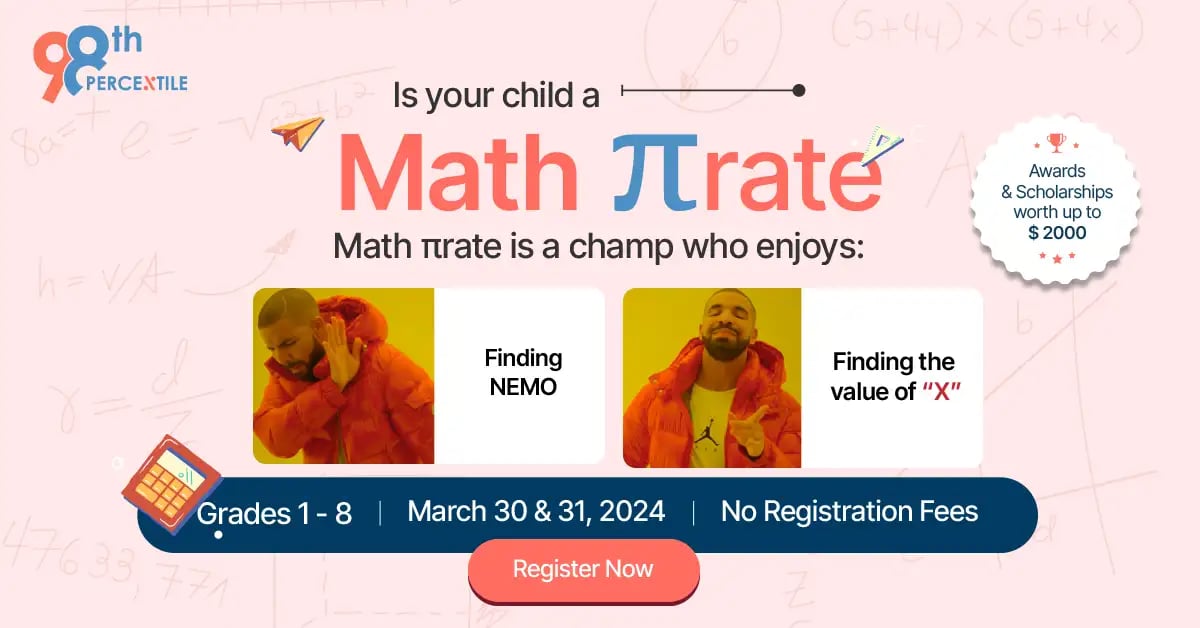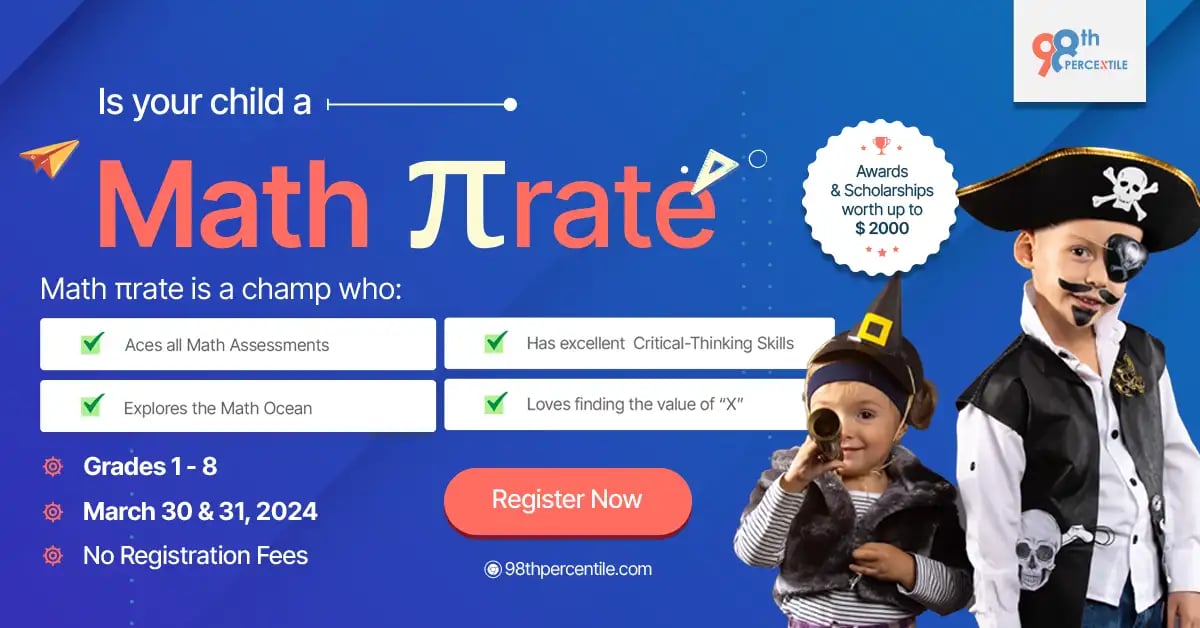Cryptic Mathematical puzzles can be confusing yet fun to solve. It makes Math an interesting subject rather than being a dull, monotonous one. Cryptic mathematical riddles offer mystery and excitement to the field of mathematics.
These problems frequently need inventive and unorthodox problem-solving techniques. A cryptic math puzzle is one that contains concealed or coded information and frequently requires creative and unusual problem-solving abilities.
These puzzles can take many shapes, and their solutions usually entail figuring out a mathematical pattern, connection, or arrangement that is not immediately obvious. Cryptic arithmetic riddles sometimes need logical thinking, numerical manipulation, and, on occasion, inventiveness to solve.
Types of Cryptic Mathematical Puzzles
Let us go over some of the cryptic mathematical puzzles than can be fun and keep children engaged for quite some time.
Cryptography (cryptarithmetic) Puzzles:
In cryptarithmetic puzzles, letters represent digits, and the aim is to determine the proper digit for each letter in order to complete a legitimate arithmetic equation. For example, in the problem SEND + MORE = MONEY, each letter represents a distinct numeral.
Magic intersects:
Magic squares are grids of numbers with the same total in each row, column, and diagonal. Magic squares are solved and created using mathematical patterns and correlations.
Join the Math Pirates! Start your adventure now!
Kakuro:
Kakuro is a number puzzle game that incorporates aspects of sudoku and crosswords. Players fill in the grid with digits while sticking to the sum limitations specified for each row and column.
KenKen:
KenKen is a grid-based puzzle that needs both mathematics and logical reasoning. The goal is to fill the grid with numbers while following specific mathematical processes and avoiding repeating digits in a cage.
Nonograms (picross):
Nonograms, also known as Picross or Griddlers, are visual logic puzzles in which the aim is to disclose a concealed image by filling in the proper squares using number clues supplied for each row and column.
Cryptic crosswords with mathematic clues:
Some cryptic crosswords use mathematical components in their clues. Solving these crosswords frequently needs a combination of wordplay and mathematical thinking.
Logic Puzzles with Math Themes:
Several logic problems, like Einstein's Riddle and the Zebra Puzzle, use mathematical components in their answers. These problems frequently entail logical thinking and the methodical removal of options.
Fibonacci challenges:
Create puzzles using the Fibonacci sequence, in which each number is the sum of the two numbers before it (e.g., 1, 1, 2, 3, 5, 8,...). Create puzzles that ask participants to find patterns or correlations in the sequence.
Sudoku variants:
Explore numerous Sudoku variations, such as Killer Sudoku, Diagonal Sudoku, and Windoku. Each version provides new rules and obstacles, necessitating different mathematical techniques.
Numerical Crossword:
Combine components of a crossword puzzle with numerical clues, pushing participants to fill in the grid with numbers rather than letters. The hints might be arithmetic procedures or specific mathematical relationships.
How do Cryptic Math puzzles help kids?
Cryptic mathematical puzzles provide various benefits to children, including cognitive growth and promoting a favorable attitude toward mathematics.
Cryptic mathematical puzzles challenge children to think critically and approach issues in novel ways. The act of decoding codes, patterns, or linkages fosters the development of problem-solving abilities.
Rational reasoning:
Solving cryptic math riddles requires logical reasoning. To solve problems, children learn to examine information, draw conclusions, and use systematic thinking.
Innovative Thinking:
Cryptic math problems frequently include unique and inventive features. Children are taught to think outside the box and explore new viewpoints, which promotes creativity in mathematics problem solving.
Quantitative Fluency:
Working on cryptic mathematical puzzles improves numerical fluency. As they work their way through the problems, children gain confidence in numbers and mathematical concepts.
Pattern Identification:
Cryptic arithmetic riddles usually require detecting and comprehending patterns. This talent is useful not only in arithmetic, but also in other aspects of learning and problem solving across disciplines.
Persistence and endurance:
Some cryptic math riddles can be difficult, necessitating patience and tenacity. Children learn that handling hard tasks requires time and work, but it is ultimately possible with determination.
Mathematical Concept Reassurance:
Cryptic math puzzles frequently use basic mathematical principles like addition, subtraction, multiplication, division, and number connections. Solving these puzzles reinforces key principles in an enjoyable manner.
Book 2-Week Math Trial Classes Now!
Enjoyment of Math:
Cryptic math challenges make learning mathematics more enjoyable. Turning learning into a game or puzzle-solving activity helps children establish a positive attitude towards arithmetic, lowering anxiety and increasing confidence in their skills.
Collaboration & interaction:
Some cryptic arithmetic riddles may be solved cooperatively, which promotes collaboration and communication. Children may exchange ideas, debate solutions, and collaborate to solve the problem, which encourages social engagement.
Technological Integration:
Many cryptic arithmetic problems may be converted for digital platforms, exposing children to technology while encouraging problem-solving. Learning is made more accessible and entertaining with interactive applications and online puzzle platforms.
Academic enjoyment:
Cryptic mathematic riddles blur the distinction between instruction and fun. Children frequently like these puzzles, which fosters a good link with learning and math that can extend beyond the classroom.
Engaging with enigmatic mathematical problems not only improves problem-solving abilities but also provides a sense of fun to mathematical inquiry. These puzzles promote creative thinking and a greater understanding for the beauty and complexities of mathematical patterns and relationships.
F.A.Q (Frequently Asked Questions)
Q.1: What is cryptic math puzzle?
Answer- A cryptic math puzzle is one that uses concealed or coded information and frequently necessitates innovative and unusual problem-solving abilities. These puzzles can take many shapes, and the answers usually entail understanding a mathematical pattern, connection, or arrangement that is not immediately obvious.
Q.2: How cryptic math puzzles help kids?
Answer- Cryptic Math puzzle helps kids to feel confident after they solve it. It also helps in enhancing their critical thinking prowess along with improving cooperation skills among other things.

 Students/Staff
Students/Staff Parents
Parents ElevatEd
ElevatEd















